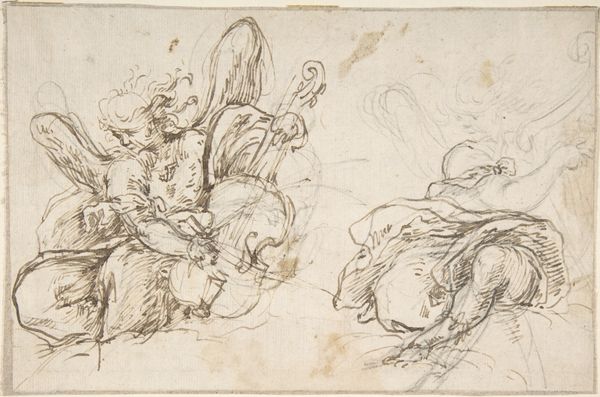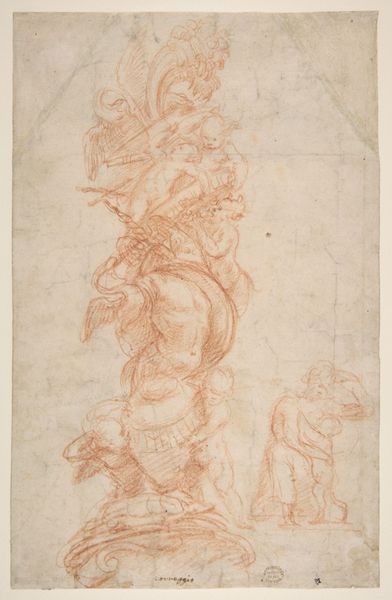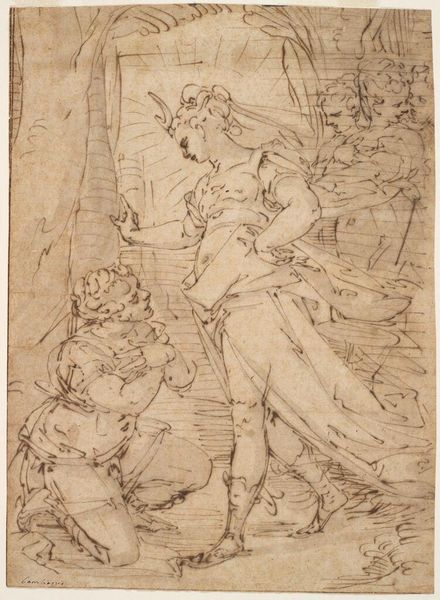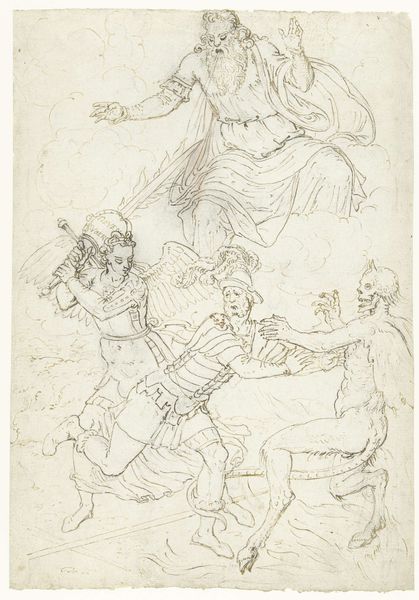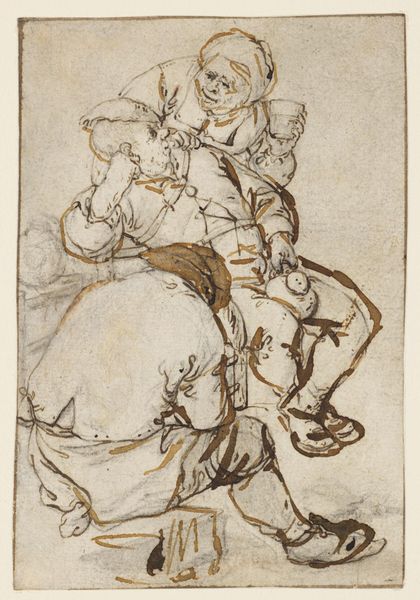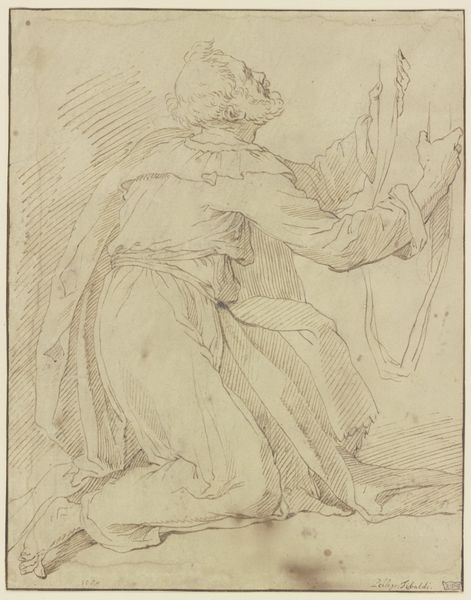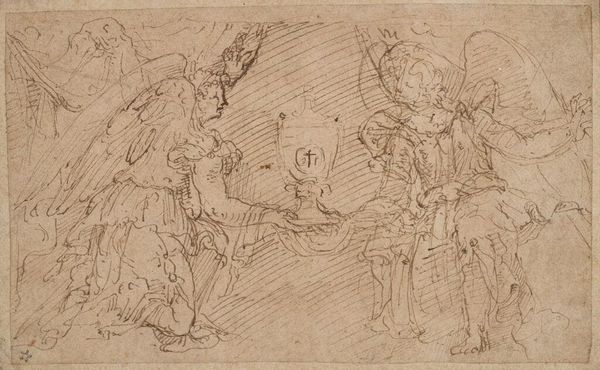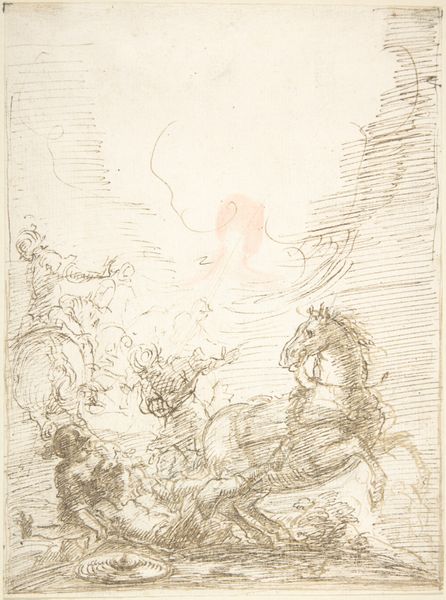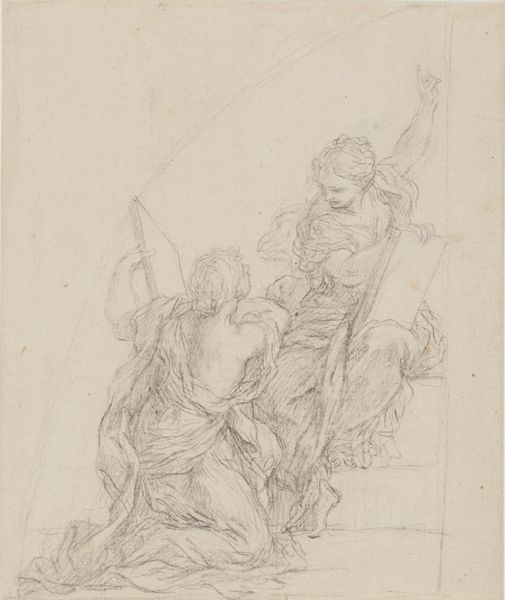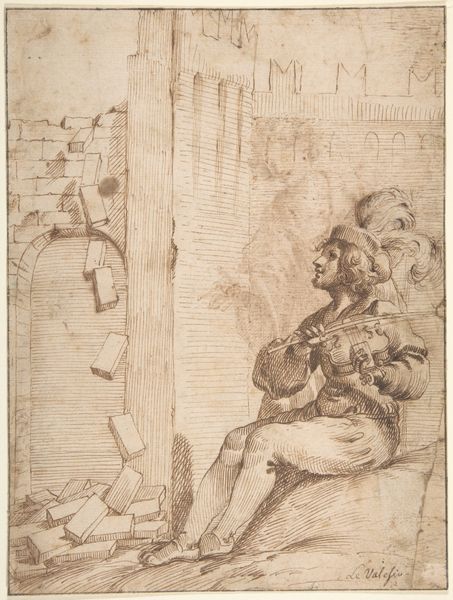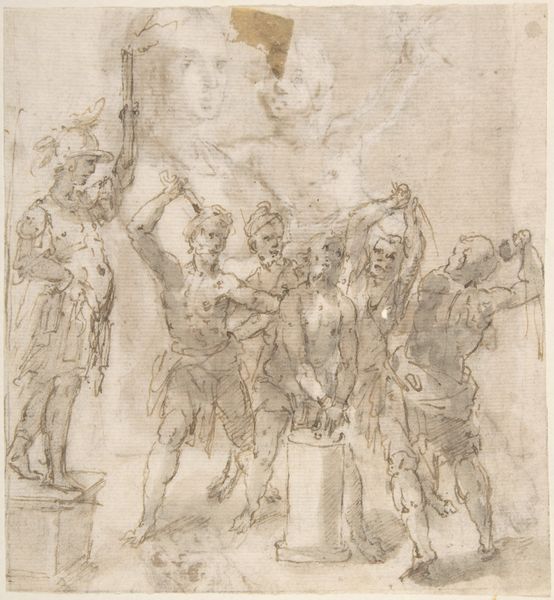
drawing, ink, pen
#
portrait
#
drawing
#
toned paper
#
light pencil work
#
baroque
#
pen sketch
#
pencil sketch
#
figuration
#
personal sketchbook
#
ink
#
ink drawing experimentation
#
pen-ink sketch
#
sketchbook drawing
#
pen
#
pencil work
#
sketchbook art
Dimensions: height 182 mm, width 153 mm
Copyright: Rijks Museum: Open Domain
Curator: This is Rembrandt van Rijn’s “Seated Actor in the Role of Capitano,” created circa 1634-1636. It's a pen and ink drawing on toned paper, currently held here at the Rijksmuseum. Editor: There’s such a feeling of movement in what appears to be a sketch. The actor's costume practically vibrates off the page, like a caricature of theatrical bravado. Curator: Precisely! The Capitano character is a stock figure from Commedia dell'Arte, typically a boastful but cowardly soldier. Rembrandt was clearly fascinated by the figure's exaggerated gestures and attire. The plume in his cap is a significant status symbol, comically oversized here, hinting at vanity and inflated ego. Editor: I'm struck by the contrast between the central figure's bold, almost arrogant stance and the smaller, more tentatively drawn figure beside him. Is there any symbolism connected with the contrasting of sizes of figures, in the broader historical context? Curator: That is a crucial observation. Consider the power dynamics inherent in performance – the central "Capitano" commanding the stage. Perhaps the second figure is intended to appear subservient to or serving the Captain? Moreover, it reveals that Rembrandt explored ways of visualising class tensions within early modern European society. The clothing details would indicate social hierarchy. Editor: There's a deliberate crudeness, almost subversive quality, in portraying this type of authority figure. Do we know if his audience would appreciate him portraying the Captain this way? I'm thinking in terms of the era’s political sensitivities and questions surrounding who held, or should hold, legitimate power. Curator: It’s very possible this character resonates because, as is with commedia dell’arte’s aim, the exaggerated depiction challenged the established social order by poking fun at authority figures, a reflection of the changing power dynamics of the time and anxieties surrounding war and militarism. Editor: So it becomes a lens through which to consider identity and the performative aspect of power within early modern culture. Curator: Yes, and from an iconographic viewpoint, even the loose, freehand style contributes to this. Rembrandt avoids idealizing the figure, allowing for vulnerability and challenging conventional portrayals of authority. It's more than a portrait; it is an active dialogue on authority. Editor: Seeing this character, the Captain, depicted so freely and irreverently opens up my perspective on how historical images continue echoing, raising questions of representation, satire, and the persistent nature of authority and resistance today. Curator: I find myself pondering how lasting, complex cultural commentaries can stem from just the simplest of sketches, continuing through our understanding of modern archetypes.
Comments
rijksmuseum about 2 years ago
⋮
Rembrandt’s interest in the theatre lasted throughout his entire career. The costume worn by this actor closely resembles that of the flamboyant, blusterous Capitano, a character in the Italian commedia dell’arte performances and popular in Dutch farces. The woman at the left, an old procuress, offers him an open bag. The Dutch word for ‘bag’ (‘tas’) at the time also meant ‘prostitute’.
Join the conversation
Join millions of artists and users on Artera today and experience the ultimate creative platform.
